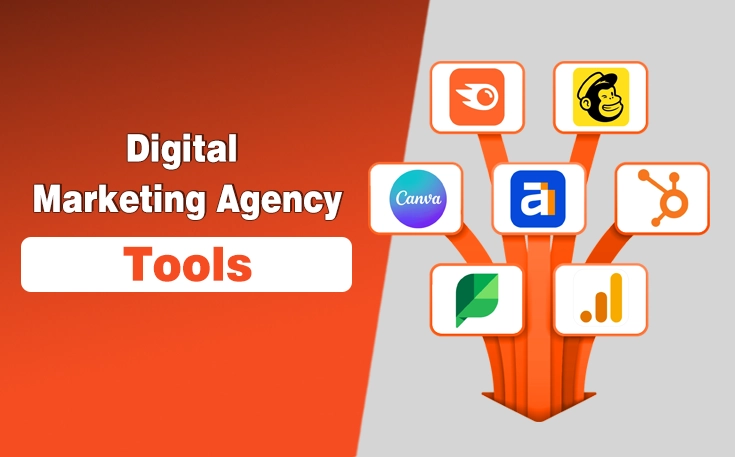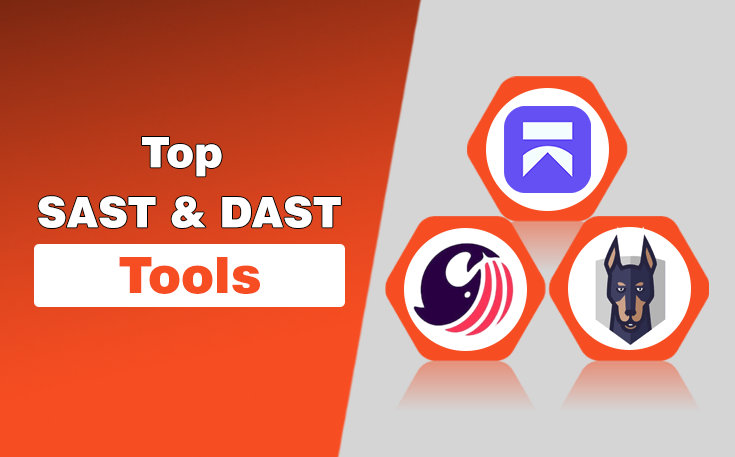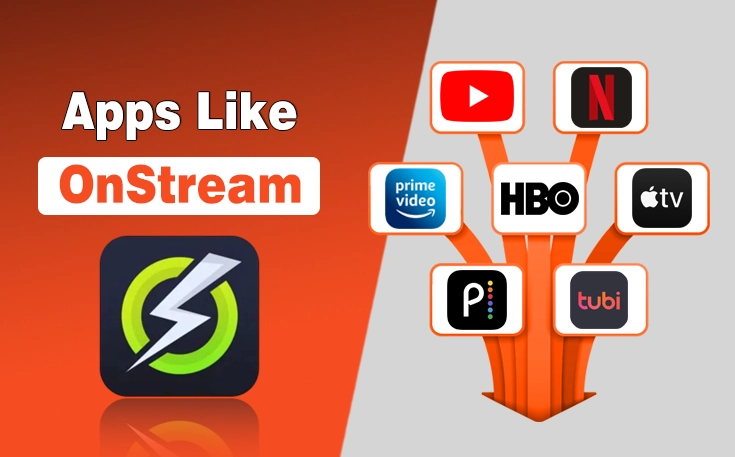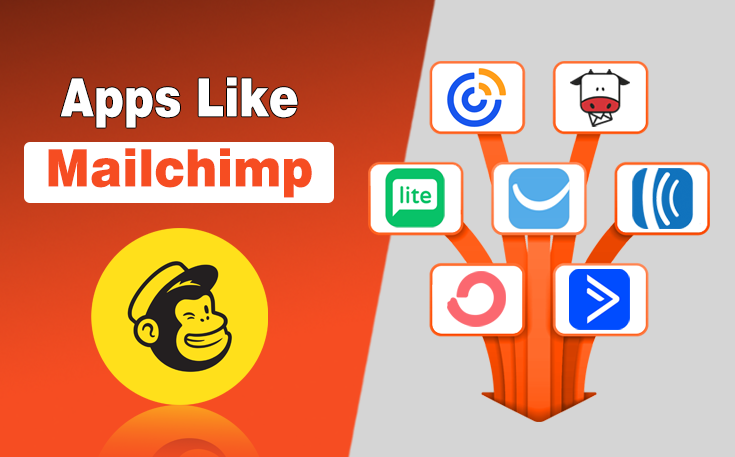Starting a new blog is exciting, but the real challenge kicks in when you’re trying to get people to actually visit it. I’ve been exactly where you are—writing, editing, and publishing content, but watching the traffic numbers barely move. It’s frustrating, I know, to determine how to drive more traffic to your blog.
The good news? You’re not alone, and there are smart, proven ways to drive more traffic to your blog, even if it’s brand new. In this guide, I’ll walk you through practical strategies that I’ve personally tried or researched deeply, and I promise they’ll help you gain real traction.
20 Smart Ways to Drive More Traffic to Your New Blog
Let’s get into the ways that help to increase your website traffic and grow your blog effectively. However, you will need consistency, expertise, and patience to get results.
- Focus on Long Tail Keywords from Day One
- Optimize Your Blog Posts for On Page SEO
- Use Social Media the Smart Way
- Start Building an Email List Early
- Collaborate with Other Bloggers
- Utilize Blogging Communities and Forums
- Improve Your Website’s Technical SEO
- Create Evergreen Content That Solves Problems
- Write Consistently and Track What Works
- Comment on Other Blogs in Your Niche
- Answer Questions on Reddit and Quora
- Submit Content to Aggregator Platforms
- Run a Giveaway or Contest
- Create Blog Series Instead of One Off Posts
- Optimize for Featured Snippets
- Use Internal Search and Navigation Widgets
- Offer Downloadable Resources or Freebies
- Host or Participate in Blogging Challenges
- Be Active in Your Own Comment Section
- Get Featured in Niche Newsletters
1. Focus on Long Tail Keywords from Day One
Before you even hit publish, your first priority should be understanding how people search. Most beginners chase broad keywords like “fitness tips” or “travel guide,” but those are brutally competitive.
That’s why I always focus on long-tail keywords, but what are they? Here is the definition of long tail keywords.
“Long tail keywords are more specific search phrases, like ‘fitness tips for busy college students’ or ‘3-day travel guide to Venice.’ They’re less competitive and attract more targeted traffic.”
- How to Find Long-Tail Keywords: You can use free tools like Ubersuggest, AnswerThePublic, or even Google’s “People Also Ask” section. Personally, I also check Reddit and Quora to see what questions people are asking. It helps me shape my blog content around real interests.
- Implement Keywords Naturally: Once you have your log tail and high volume keywords, don’t just stuff them everywhere. Use them naturally in your headings, URL, meta description, image alt text, and throughout your content in a way that feels organic.
Pro Tip
While integrating the long tail keyword to your SEO title, make sure the length of your SEO title does not exceed 60 characters.
2. Optimize Your Blog Posts for On Page SEO
On page SEO is something I never overlook because it’s one of the few things completely under my control. Let’s break this down into some specific actions.
- Craft Engaging Titles: Your title should include your primary keyword and promise some form of value. For example, instead of “My Trip to Paris,” try “Affordable 5-Day Itinerary for First-Time Visitors to Paris.”
- Use Header Tags Correctly: Use H2 for main sections, H3 for subsections, and H4 if you need to go further and structure the content. It helps both search engines and readers understand your content structure.
- Add Internal and External Links: Link to other posts on your blog to keep people engaged, and cite high authority external sources to build credibility and write SEO friendly content.
- Image SEO: Use high quality images, name them properly, and add descriptive alt text. I always compress my images using TinyPNG to make sure they don’t slow down my page speed.
Pro Tip
Check the quality of external sources and only link to those sites that provide credible and authentic information.
3. Use Social Media the Smart Way
I know social media platforms can feel overwhelming, especially when you’re managing multiple platforms. But here’s the truth: You don’t need to be everywhere. You just need to be where your audience hangs out.
- Choose the Right Platform: If your blog is visual (like travel or fashion), Instagram and Pinterest work well. For business or self-development blogs, LinkedIn and Twitter might be more effective. Personally, I focus most of my efforts on LinkedIn and Facebook.
- Share Your Content Consistently: Don’t just share your blog once and forget it. Repurpose your post into different formats – a carousel on Instagram, a Pinterest infographic, a short tweet thread. Keep the content flowing in fresh ways.
- Join Relevant Facebook Groups: This one’s underrated. I’ve joined niche Facebook groups where members are eager to read and share helpful content. But don’t spam—genuinely participate and drop your links where appropriate.
Pro Tip
Be there on social media platforms every day and post consistently to build trust with the audience and ensure authenticity.
4. Start Building an Email List Early
Even if you think it’s too early, I strongly recommend starting an email list from the very beginning. Social platforms can change overnight, but your email list is yours forever. SOo, email marketing can be your long term tool to drive traffic to your blog.
- Offer a Valuable Lead Magnet: Give your readers a reason to subscribe. This could be a free checklist, guide, mini course, or template. I offered a free “White Hat SEO Guide,” and it worked wonders for early subscribers.
- Use Simple Email Tools: You don’t need fancy platforms to start. MailChimp and ConvertKit are beginner-friendly email marketing tools and let you create automations, welcome series, and more.
- Stay Consistent with Emails: Whether it’s once a week or twice a month, stay in touch with your readers. Share new posts, behind-the-scenes updates, or exclusive content. This not only drives traffic but also builds loyalty.
Pro Tip
Send emails only to those users who are genuinely interested in the services or products you are offering to reserve your resources and time.
5. Collaborate with Other Bloggers
One of the smartest moves I made early on was networking with other bloggers. It’s not just about backlinks—it’s about mutual growth.
- Guest Blogging: Reach out to blogs in your niche and offer to write a guest post. You’ll get exposure, a backlink, and possibly some new loyal readers. Make sure to write high quality content and tailored to their audience.
- Expert Roundups: Create a post where you ask experts a question and compile their answers. Then tag them when it goes live—they’re likely to share it with their audience.
- Podcast Appearances and Interviews: Even if you’re not a podcaster yourself, getting interviewed or collaborating on audio content can introduce your blog to a fresh new audience.
Pro Tip
Try to create links with bloggers who are related to your own niche to build your authority and trustworthiness.
6. Utilize Blogging Communities and Forums
Beyond social media, there are entire communities dedicated to blogging and niche interests. These can be goldmines for traffic and relationships.
- Platforms to Explore: I’ve found Reddit, Warrior Forum, and Quora particularly helpful. Be active in relevant subreddits or answer questions with value, and drop your blog link only when it truly fits.
- LinkedIn as a Secondary Platform: Reposting your blog posts content on LinkedIn with a canonical link back to your original post helps you get discovered without hurting your Search Engine Optimization.
Pro Tip
Not all communities are highly professional. So, you should join only the real ones which have genuine and interested audience.
7. Improve Your Website’s Technical SEO
Your blog could have the best content ever, but if it is facing Technical SEO issues like your site loads slowly, the users will not find it helpful and go to other sites quickly. Ultimately, your bounce rate will increase. Further, if your site structure is poor, people (and Google) won’t stick around.
- Use a Fast, Mobile-Responsive Theme: Choose a lightweight WordPress theme like Astra, GeneratePress, or WPDevShed. Most of your visitors will be on mobile, so don’t ignore responsiveness.
- Fix Broken Links and Errors: Use tools like Screaming Frog or Ahrefs Backlinks Checker to find broken links and fix them. A clean, error-free site builds trust with search engines and visitors.
- Enable Schema Markup: Schema helps Google understand your content better. You can use plugins like Rank Math or Yoast SEO to easily add schema to your blog posts.
Pro Tip
It would be best to perform A/B testing after applying the theme to determine which one looks better and perform well on all devices.
8. Create Evergreen Content That Solves Problems
Evergreen content is content that remains relevant for a long time and enables you to drive more traffic to your blog. I always ask myself, “Will someone find this useful even a year from now?” So, to write appealing content and make it helpful for the audience to bring more traffic, the following are the key tactics.
- Problem Solving Focus: Whether it’s “How to Hire an SEO Agency” or “Benefits of SEO Audit Services,” people love content that solves their problems. Make your posts detailed, helpful, and actionable.
- Update Content Regularly: Don’t just publish and forget. Revisit your top-performing posts and update them with new info, better keywords, or clearer formatting every few months.
Pro Tip
Create list articles like “Top-10” and “How-to” guides as they are forever and attract more audience.
9. Write Consistently and Track What Works
Content is the engine of your blog. Without it, no strategy works. But consistency beats perfection. It also opens the way for your current visitors to return to your blog to find something catchy and exciting on a daily basis. Besides, it unlocks doors for other users to come to you, which will ultimately drive more traffic to your effective blog posts.
- Stick to a Publishing Schedule: Whether it’s one post per week or two per month, set a goal and stick to it. I found that writing in batches and scheduling ahead saved me a lot of stress.
- Use Analytics to Guide You: Google Analytics and Search Console are essential. See what posts are getting traffic, where visitors come from, and what low KD keywords you’re ranking for. Let data guide your future content decisions.
Pro Tip
While following the schedule, do not compromise on the quality of your content as it will lead to worse results.
10. Comment on Other Blogs in Your Niche
Blog commenting is an old-school trick that still works when done genuinely. I’m not talking about spammy “Nice post!” comments, either. I mean thoughtful insights.
- Why Thoughtful Comments Matter: When you add real value to a conversation, not only do the blog owners notice, but their readers do too. Your name and blog link become visible to a new audience.
- How I Do It Effectively: I subscribe to a few blogs in my niche. Whenever they post something relevant, I leave a comment that either adds a point, asks a question, or shares my own quick experience. It’s subtle, but it works.
Pro Tip
Be consistent in engaging with these platforms and interacting with users to build a solid reputation.
11. Answer Questions on Reddit and Quora
These platforms are goldmines for traffic. People go there with real problems—and if you have the solution, they’ll check out your blog. Ultimately, you will be able to drive more traffic to your blog.
- How to Find the Right Questions: Search for your blog topics in Reddit threads or Quora questions. I use keyword alerts so I get notified when something related comes up.
- How I Include My Blog Naturally: I write a helpful answer first. Then, if it makes sense, I say something like, “I actually wrote a full blog post about this here,” and drop the link. Always prioritize value over promotion.
Pro Tip
Make sure you follow only those threads and communities that are relevant to your niche for better outcomes.
12. Submit Content to Aggregator Platforms
Content aggregators like Flipboard, Mix, and GrowthHackers are perfect for boosting visibility beyond your usual audience. When more and more people know about your brand or website, they will visit you and open the way to growth.
- Why Aggregators Work: They already have a built-in user base looking for content. When you submit your blog there, you tap into a stream of highly engaged readers.
- My Submission Strategy: I look for trending or evergreen posts on my blog, add a short intro, and link back to the full piece. I make sure the titles are super clickable because that’s what gets people to engage.
Pro Tip
Check the quality of the sites where you want to submit your articles to reach the right and interested audience.
13. Run a Giveaway or Contest
Giveaways aren’t just for influencer marketing—they can skyrocket your blog and help you drive more traffic if done right. You have to identify the target audience and determine their interests. In this way, you can pull them to your blog effectively.
- What Kind of Giveaways Work Best: I always tie the giveaway to my blog’s niche. For example, case studies, website content audit, or an SEO tool. That way, the participants are actually interested in my blog.
- How I Promote It: I share it across social media, email my list, and even ask blogger friends to help spread the word.
Pro Tip
Take note of the platforms your audience mostly engages with and then target them only to get more results with minimum investment.
14. Create Blog Series Instead of One Off Posts
Instead of writing standalone articles, I plan out content in a series. It keeps readers coming back and helps with internal linking. For example, when covering the broader topic, Search Engine Optimization, I have not only written On Page SEO but also all the other relevant posts, like:
- Off Page SEO
- Technical SEO
- Local SEO
- Semantic SEO
- International SEO
When you split a big topic into 3-5 parts, readers tend to binge through them like a Netflix series. It increases time on site and builds anticipation.
If you want to write a series of content, I will advise you to choose a broad topic and break it into logical segments. Each post links to the previous and next, which makes it easy for readers to navigate.
Pro Tip
Take help from third party SEO tools and Google search suggestions to find the ideas that people are searching for related to your primary topic.
15. Optimize for Featured Snippets
Featured snippets are those answer boxes at the top of Google search. If you get one, you will be able to drive more traffic to your blog overnight.
- What Are Snippets Looking For: Google likes direct answers, lists, and tables. I format my posts to include clearly labeled answers, definitions, or numbered steps.
- My Optimization Tips: Use subheadings to break up answers, keep the language clear, and add a quick one-paragraph summary right after the heading. This structure often gets picked up by Google.
Pro Tip
Answer the question in a single line instead of writing unnecessary details to get positioned in Featured Snippets.
16. Use Internal Search and Navigation Widgets
When you help readers find more content on your blog, it keeps them around longer. That’s why I always suggest focusing on Internal linking as it keeps users engaged.
- Why Navigation Matters: Most readers land on one post and leave. If you can guide them to other helpful content, they stay longer and engage more.
- Simple Widgets I Use: I add a search bar at the top, an “Editor’s Choice” section, and category filters. This small change actually boosted my page views per session.
Pro Tip
Focus on breadcrumb navigation and optimize it properly to enable your audience find their desired content easily.
17. Offer Downloadable Resources or Freebies
People love getting free value, and this is a sneaky way to collect emails and boost traffic. As I mentioned earlier, I offer downloading case studies regarding my different projects.
So, people can learn through them and put in the right strategies to take their sites to the top of the SERP.
- What Kind of Freebies Work: While not everyone can give case studies, you can offer checklists, templates, and bonus guides that complement a blog post. For example, if I write about SEO tools, I give away a “Top SEO Site Checkers Tools” Checklist.
Pro Tip
Make sure the freebies you are offering are totally unique and helpful for your users.
18. Host or Participate in Blogging Challenges
Challenges are a fun way to get noticed and collaborate with others. When you participate in such events and share your insights, people get to know about your expertise. Google now loves those who follow E-E-A-T guidelines.
So, when you write blog posts, be sure to add your
- Experience
- Expertise
- Authoritativeness
- Trustworthiness
Following this tactic will somehow help you climb the SEO rankings and appear at the top of the search engine results pages.
Pro Tip
Not all blogging challenges are helpful. So, make a choice wisely.
19. Be Active in Your Own Comment Section
Engagement doesn’t stop when you hit publish—it begins there. If you want to maintain or increase traffic to your blog, you should monitor the comments section of your own blog and reply to the users.
- Why Replying Matters: When readers comment and you reply, they feel seen and valued. It builds community, and some even become loyal fans.
- How I Keep It Genuine: I set aside time every day to check and reply to new comments. Sometimes, I even update a post based on a reader’s question.
Pro Tip
Do not entertain all comments, as some may be spam. Respond only to those that are helpful.
20. Get Featured in Niche Newsletters
Newsletters are underrated traffic sources. If your content gets featured, it can reach thousands of niche readers.
- How to Get Featured: I find newsletters in my niche using different tools or by simply Googling “best [niche] newsletters.” Then I send a personal pitch with a link to my best-performing post.
- Why It’s Worth It: You not only get direct traffic but also build authority through such kind of link building. If a trusted voice recommends your blog, people are far more likely to click and stick around.
Pro Tip
Before pitching in the newsletter, optimize your content with E-E-A-T guidelines and make it extremely helpful for the audience.
Now, I Want You to Know
These are the details about smart ways to drive more traffic to your blog. Growing your blog’s traffic takes time, strategy, and a little bit of hustle. I’ve shared everything that’s worked for me, along with tips I’ve picked up from experts and experience.
Don’t feel pressured to do everything at once. Pick a few strategies, get comfortable, and then expand. The key is consistency and genuine value.
If you’ve found these tips helpful, why not bookmark this post or share it with a fellow blogger? You’ve got this—I believe in your journey.
Need custom app with amazing features?
Get a Quote




